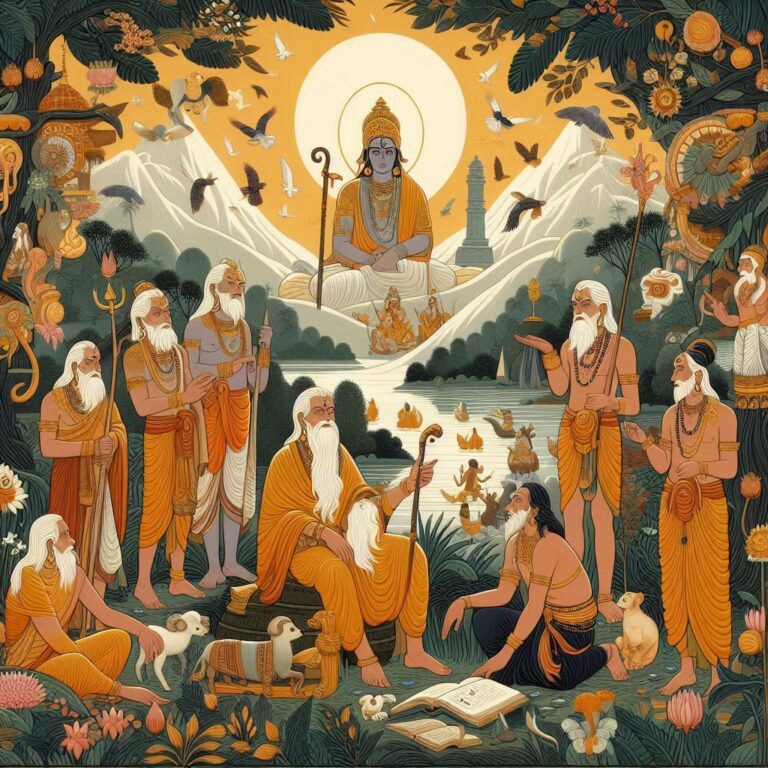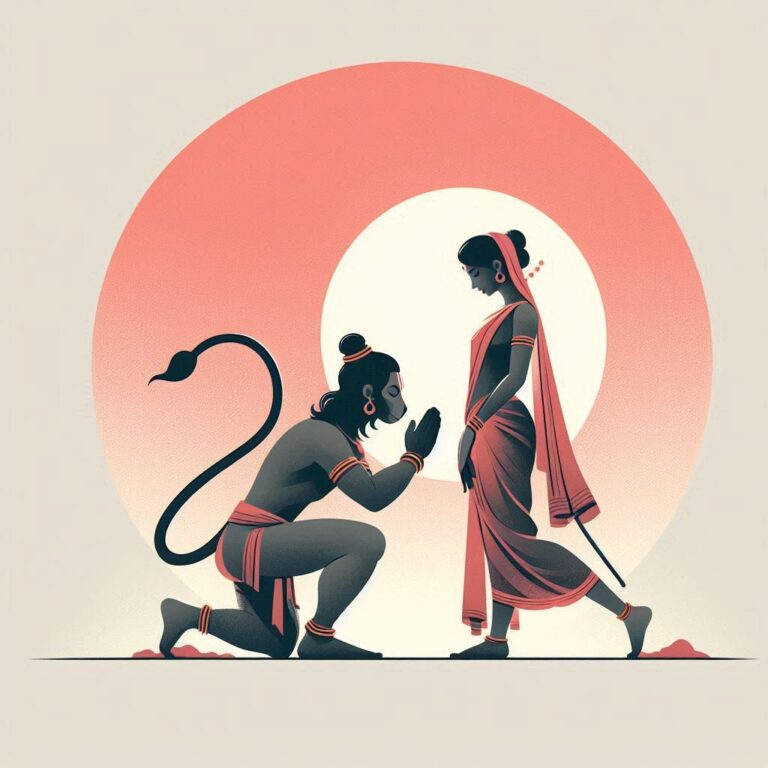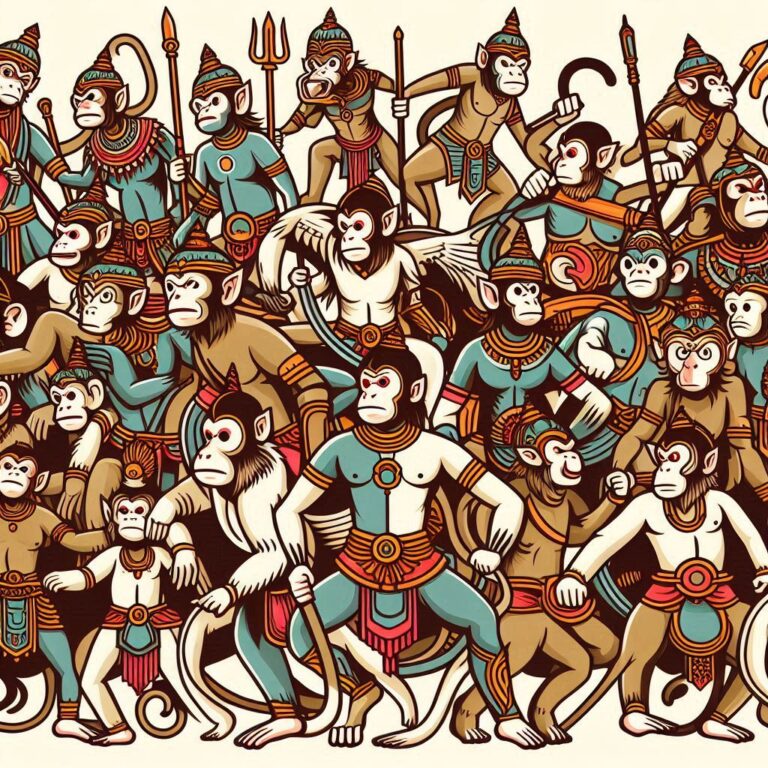Vali’s Defeat: Sugriva’s Triumph and Coronation in Ramayana
Vali’s Defeat and Sugriva’s Rise: A Deep Dive into Ramayana
When diving into the epic tales of the Ramayana, most people are entranced by Rama and Sita’s love story, but there’s also a captivating sub-plot involving Sugriva and his battle against Vali. This story is not just about a fierce fight; it’s about friendship, loyalty, betrayal, and the complexities of dharma. So buckle up as we explore the dramatic showdown between Vali and Sugriva, leading to Sugriva’s coronation.
Setting the Scene: The Kingdom of Kishkindha
Imagine a lush, vibrant kingdom, full of towering trees and crystal-clear rivers, located in present-day Karnataka. This is Kishkindha, ruled by Vali, the powerful king of the Vanaras (monkey-like beings). Vali was no ordinary monkey; he was blessed with tremendous strength and invincibility. But as history reveals, with great power often comes great tyranny, and Vali’s reign was marred by hubris.
The Brothers’ Rift: Vali and Sugriva
Vali and Sugriva were brothers, but their bond was severed by jealousy and ambition. Vali’s arrogance grew after he defeated the demon Dundubhi, and Sugriva watched in awe but also in fear. Ultimately, their fraternal relationship crumbled over a misunderstanding involving a fierce battle that ultimately forced Sugriva to leave the kingdom.
So, what led Sugriva to seek revenge? Imagine a love-hate relationship magnified by the struggle for power. Sugriva was betrayed and exiled, his heart heavy with the thought of reclaiming his birthright. And guess what? He found an unexpected ally—Rama.
The Emergence of a New Alliance
When Rama, banished from Ayodhya and on a quest to rescue Sita, encountered Sugriva in exile, the two forged a remarkable friendship. Think of it as the classic story of “the underdog getting help from a noble hero.” Rama promised Sugriva that he would assist him in defeating Vali in exchange for Sugriva’s help to locate Sita. This alliance would change the course of their fates.
The Instrument of Fate: The Challenge
Rama planned cleverly. He was well aware of Vali’s formidable strength, which made a direct confrontation daunting. Instead, Rama’s plan involved a strategic approach that would exploit Vali’s one weakness: his arrogance. The plan was to use Vali’s own hubris against him.
The Battle Unfolds: The Face-off between Vali and Rama
The confrontation came at a fateful moment when Vali was engaged in battle with a demon that invaded his territory. Sugriva, emboldened by Rama’s support, stood at the sidelines, filled with anticipation and dread. The air was thick with tension.
As Vali fought, he paused briefly to mock Sugriva, taunting him with his inferiority. That’s when Rama acted, launching a lethal arrow aimed at Vali. Shockingly, Vali had no idea where the arrow came from, which is the stuff of legends! A powerful foe felled without a chance to retaliate.
The Aftermath of Victory
With Vali defeated, the kingdom of Kishkindha was ripe for a new leader. What happens next is fascinating. Sugriva, once a fearful brother, now stepped into the role of king, with Rama standing by his side. Their relationship transformed Sugriva from a timid exile into a ruler worthy of his brotherhood.
This triumph wasn’t just about Sugriva taking his throne back; it was a victory of good over evil, ambition over tyranny.
The Coronation of Sugriva
Imagining Sugriva’s coronation invokes beautiful imagery: flowers cascading, drum beats, and joyous Vanaras celebrating the return of their rightful king. Rama, having kept his promise, stood as a pillar of support throughout the ceremony.
After becoming king, Sugriva vowed to help Rama in his quest to rescue Sita and protect dharma. Their bond was now sealed not only by duty but also by camaraderie, which underscored the importance of alliances in life.
Dohas and Shlokas Related to the Tale
As we dive deeper into this tale, let’s reflect on some meaningful verses, or dohas and shlokas, that represent the emotional and ethical undercurrents of this story:
1. दूषित कर्म न धरमन।
दुश्चरित न ययि सच्चरितं॥
(Dūṣita karma na dharman,
Duścarita na yayi saccaritaṁ.)
Dirtied actions do not uphold dharma,
And a wicked nature cannot hide truth.
2. मित्रं जनेषु सर्वेषु।
सुखदुःखं च क्रियते।।
(Mitraṁ janeṣu sarveṣu,
Sukhaduḥkhaṁ ca kriyate.)
Friendship among all,
Is the bridge to joy and sorrow.
Through these verses, we see how spirituality infuses daily life’s complexities, revealing the underlying truths about friendship and loyalty.
Conclusion
The saga of Vali’s defeat and Sugriva’s rise is a compelling narrative filled with rich symbolism, profound lessons, and powerful emotions. It teaches us that while power is temptingly intoxicating, it is humility, friendship, and faithfulness that resonate the most in the grand tapestry of life.
Whether you are a student of spirituality or simply someone looking for inspiration, the events surrounding Sugriva and Vali remind us that redemption is always within reach.
FAQs
Q1: Why did Rama choose to help Sugriva instead of fighting alone?
Rama understood that a united front would be more powerful. By helping Sugriva, he not only assisted a friend but also gained a strong ally who knew the terrain and the Vanara army.
Q2: How did Vali’s arrogance lead to his downfall?
Vali’s arrogance made him underestimate his enemies and ignore the simple truth that not all fights are fought in plain sight. His hubris clouded his judgment and led him to be attacked from an unexpected angle.
Q3: What were the moral lessons derived from Sugriva’s story?
The story teaches the values of loyalty, the importance of alliances, and the necessity to choose friends wisely. It also emphasizes the need for humility in leadership.
Q4: How did Sugriva change after becoming king?
Once crowned, Sugriva transformed from a fearful exile into a confident ruler. His resolve to protect his kingdom and uphold dharma became central to his reign.
Q5: Are there any other epics with similar themes of brotherhood and redemption?
Yes! Other epics like the Mahabharata explore similar themes of family bonds, rivalry, and redemption. The stories offer timeless lessons relevant across generations.

With stories like these, we can reflect on our journeys and find strength in our struggles. The lessons learned from the lives of Sugriva and Vali resonate even today.







